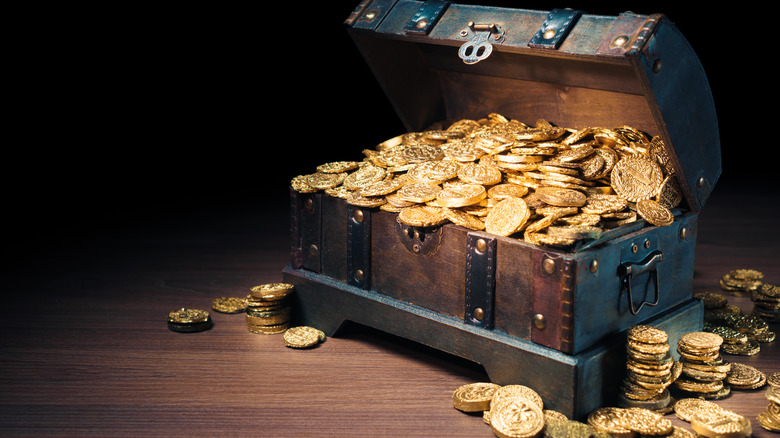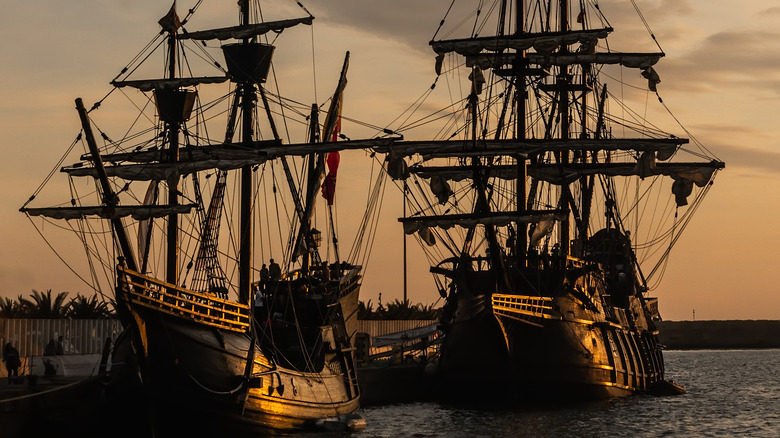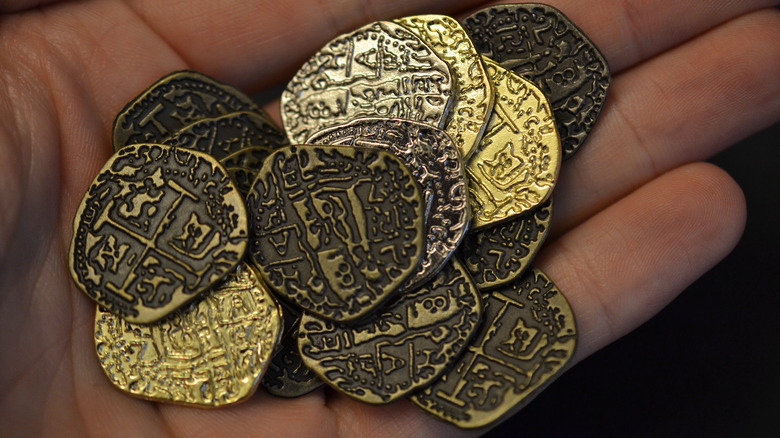The Real Reason We Can't Find The Legendary Treasure Of Lima
Never the let the pessimists convince you that there are no buried treasures in the world, untold riches waiting for someone as plucky as you to unearth them. There certainly are. But not all of them are easy to find. One is the fabled Treasure of Lima, one of the richest hoards of pirate gold in the Americas. It probably exists. It's likely still buried. But no one is likely to find it.
WhatCulture explains that the Treasure of Lima was a tremendous collection of gold coins, jewels, weaponry, and religious artifacts, worth about $1 billion, according to Forbes. It was amassed in the city of Lima, Peru, over the course of that country's colonization by Spain. In 1820, when Peru declared independence, its new leaders decided to move the treasure to Mexico, where it would be safe from wartime chaos. The Peruvians contracted an English merchant captain, William Thompson, to transport the gold. But Thompson had other plans.
A nation's wealth, stolen by pirates
It may have been the sight of that splendid golden treasure that tempted Captain Thompson to piracy. Or maybe he had made up his mind when he signed the contract. That much isn't clear. What is clear is that en route, Thompson and his crew murdered the Peruvian guards who attended the treasure and charted a new course to Cocos Island, a rocky island, surrounded by shark-infested waters, off Costa Rica. There they buried the treasure. It seemed like a secure investment: Only they knew where the money was buried, and they could stop by and fill up their pockets at their leisure for the rest of the their lives.
A navy ship eventually captured the thieves, but agreed to spare Thompson and his mate from hanging if they directed the authorities to the treasure. Unfortunately, it didn't work. Both men managed to slip out of jail and disappear. No living soul besides them knew the exact location of the gold.
An island of mysteries
For almost 200 years, treasure hunters have sailed to Cocos Island to try their luck. Forbes recounts that one such adventurer, a German named August Gissler, wangled the title of governor of Cocos Island from the Costa Rican government in 1897, purely for access to the remote islet and uninterrupted excavation. Gissler was convinced that other pirates, like Benito Bonito, had buried gold on Cocos, or sunk it among its swarming shoals of hammerhead sharks. Gissler would leave in 1908 with a few coins for his effort.
Today, Cocos Island is only accessible by boat, and Costa Rican law prohibits overnight stays. It is part of a nature reserve, famous for its rare birds and sealife, and traffic from treasure hunters makes Costa Rican wildlife researchers justifiably nervous, as Forbes reports. Permits for archaeological excavations can be hard to come by.
But adventurers keep coming as often as they're allowed, dragging their shovels and scuba gear, applying frantically for permit renewals, spreading false rumors to throw off their rivals, always on the brink of discovering the Treasure of Lima.


